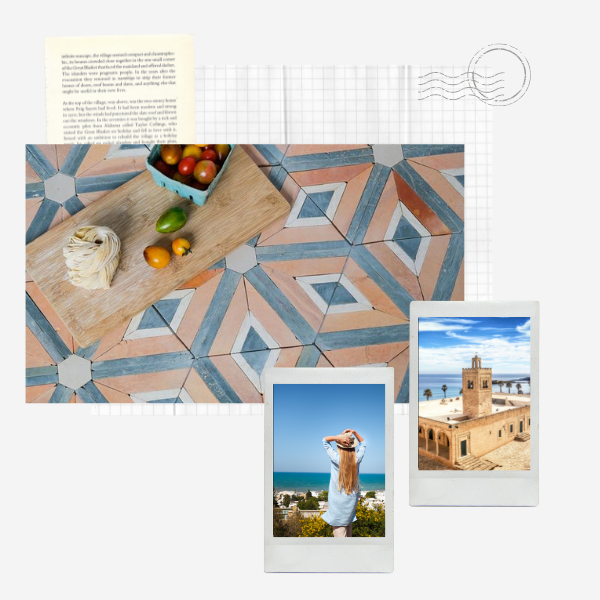What is Mosaic Tile?

We all get fascinated once we encounter the architecture of the ancient civilizations. The history behind the paintings amazes us with neat work from thousands of years ago regarding the art, motives, and shapes. Yet, some astounding elbow greases look precisely like paintings aren't just dye on the surfaces. They are the most historical, maybe one of the warp and woof of the world's first architectures and creative items; mosaics.
This beautiful art has an impact on all around the world. Well, yes, but where did it come from? The word mosaic is derived from the Greek term 'Mousa', which means 'muse'. Because these tiny regular or irregular pieces of tiles have flourished in the many worships, temples, and many communal places since the 3rd millennium BC, the oldest remainders still inspire the interior designer devotees. Imagine the bronze age and the effort of a wall or floor made of thousands of small mosaics to make the dream to reality, the fact of being immortal in the art by providing a rigid material compared to paint on the surfaces. Such a robust finding around we had over a long time.

It won't be a surprise if we tell the ancientest mosaic we have found is in the Mesopotamia site, where fertility reverberated itself in nature. This new art form is enthusiastically adopted by artisans of the era. And because of being the most central area of the current civilizations, it was spread effortlessly. The most crucial topics and beliefs of that time were used for the design. Hunting scenes, mythological themes, or the wealthy and the culturally advantaged class subjects were favored in the early stages.

Mosaic tiles preserved their popularity by advancing the surfaces in Roman periods. Once the mosaics' beauty and durability were noticed, admired paintings began to be copied and blossomed the Hellenistic villas and residences. Because it was getting trendy so fast, the mosaic workers and the know-how of this material were enriched by time. As the Roman Empire extended its North African territories within the early stages of the common era, numerous mosaic floorings were fashioned to embellish townhouses and bucolic mansions of the African upper classes. Especially in today's Tunisia site, mosaic art adopted and blossomed in thousands of remarkable flooring artworks. From what we can tell, Tunisians' connection with the mosaic dates back to between the second and sixth centuries. This is where we stopped to breathe and were amazed by the wealth in the predominantly mosaic culture of Tunisia.

Mosaics in Tunisia
Tunisia is placed in North Africa, close to the Maghreb region, with a coast to the Mediterranean Sea. This area had always been the beaten track of immense powers. We just mentioned the Roman Empire and its legacy about the mosaics.
Today, it might be the only place you can find the finest Roman mosaic collection. After Roman Empire reigned to Tunisia for almost 800 years, quite a long time, Ottoman Empire conquered this area. Even though Tunisia managed to retain the autonomy because Ottoman Empire ruled it from afar, we can see the strong effect of the Islamic figures on the handmade craftsmanship all over the mosques by using mosaics and tiles. After 300 years of Ottoman sway, France dominated Tunisia. Today, Tunisia embarks on the hundreds of years of different cultures and ethnicity. Harmony of the multicultural background enriches the mosaic art and usage in Tunisia. Accordingly, the design of the mosaic tiles is timeless and reflects a history that will never be monotonous. That's the reason it is used almost everywhere in residential and commercial areas. Check our kitchen trends of 2023 to find more inspirational content.
Why Mosaics.co inspired by Tunisia?
Apart from the thousands of years of history behind Tunisia, craftsmanhips' know-how is priceless, and the effort to produce the mosaic tiles. People from the tile sector know that the Tunisian mosaic tiles are one of the best in the world and can't be created with the same quality and beauty anywhere in the world. Because all the mosaics are handmade, making the mosaic tiles more worthwhile.
As Mosaics.co, we value people's investments worth seeing, touching, and inspiring for years. We are working with the local Tunisian people who are respectful of the environment, sustainability, and human rights. The product is being produced in a peaceful and respectful area, backed by the incredible talent of dexterity about the mosaics. This is how to figure out the quality of the products by just touching the samples.
Order a sample tile today, or let us know what you think about the mosaic tiles.
If you wonder why you should consider mosaic tiles check our, handmade mosaic tiles pros and cons blog post.



Leave a comment